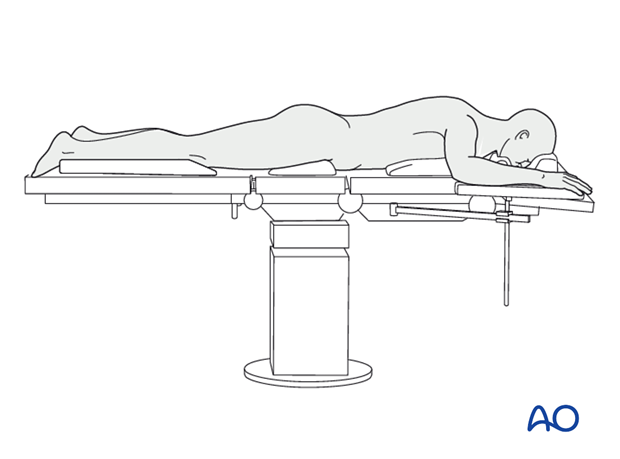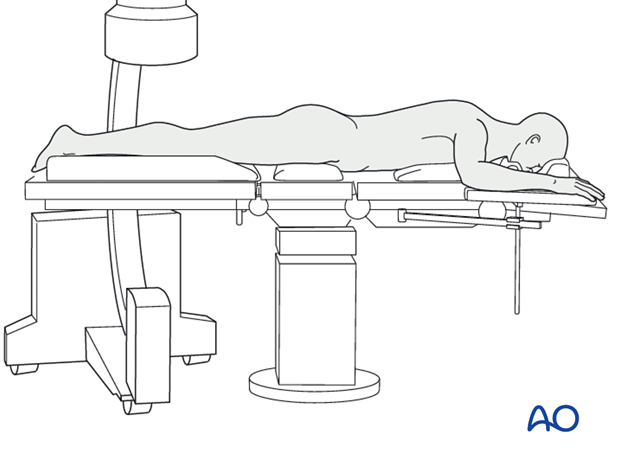Prone position
1. Patient positioning
The patient is positioned prone on a radiolucent table or a standard table with a radiolucent extension. Chest rolls are placed underneath the thorax to allow for optimal ventilation. All of the bony prominences are padded to prevent pressure sores.
The face is protected with a cushion to avoid pressure on the eyes.
The injured leg is elevated with a bump to facilitate lateral imaging with the C-arm.
If desired, apply a tourniquet around the upper thigh.
Prepare the entire leg circumferentially, from toes to upper thigh. Drape so it is completely mobile.
Note: Patients with unstable spine fractures, or chest injuries, etc., have increased risks associated with prone positioning. Consider carefully whether these risks are worth taking.

2. C-arm placement
The C-arm should be placed on the opposite side from the surgeon. It should be able to pass freely under the table for a lateral view of the affected leg.













